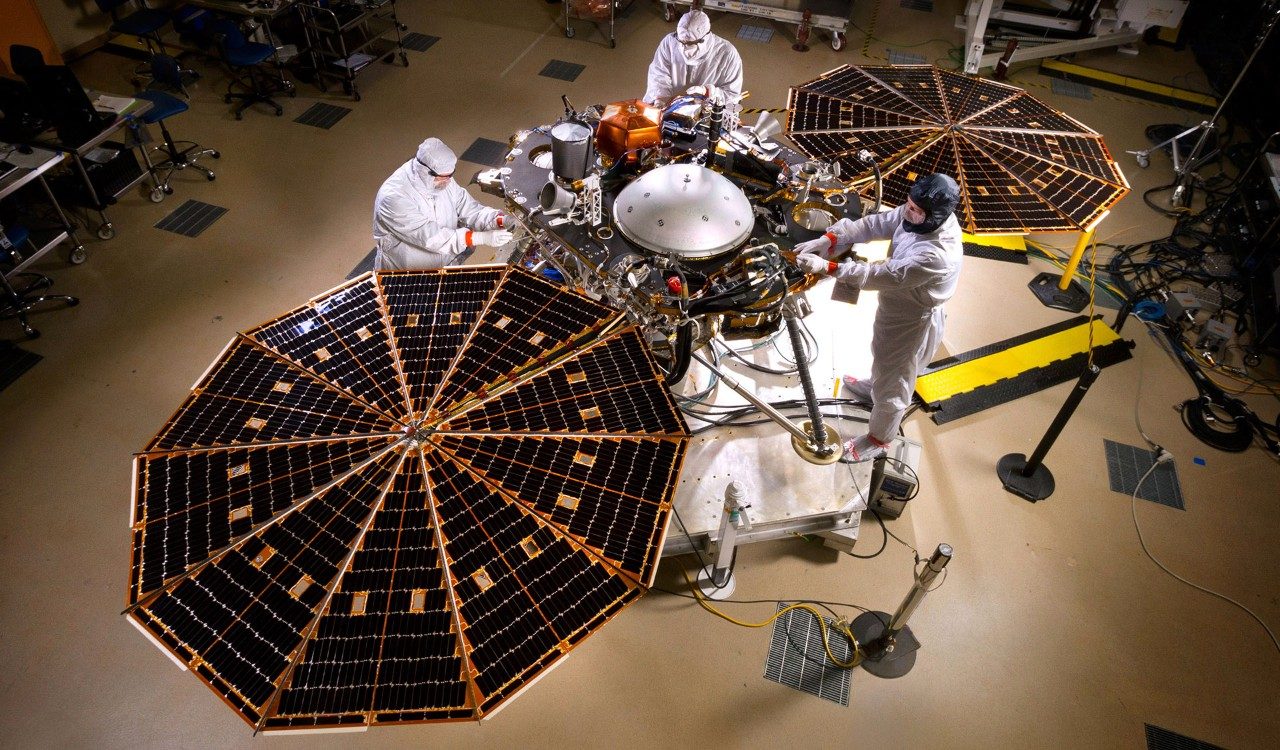InSight Mission Overview
InSight, which stands for Interior Exploration using Seismic Investigations, Geodesy and Heat Transport, is NASA’s next Mars lander and is designed to explore the Martian interior. The InSight mission is led by NASA’s Jet Propulsion Laboratory (JPL), which has been a pioneer in Mars exploration for decades. JPL’s collaboration with Lockheed Martin goes back to the Viking lander in 1976, which was NASA’s first mission to the surface of Mars. JPL partners with both academia and private industry firms to bring the best of national and international expertise and innovation forward to make exploration missions like InSight possible.
Equipped with three primary instruments, the lander will take the first-ever in-depth look at the planet’s interior. The data will help:
- Determine the size, composition and state of the core of the planet
- Analyze the thickness and structure of the crust
- Determine the structure of the mantle
- Investigate the thermal state of the interior
- Measure the rate of internal seismic activity
- Measure the rate of meteorite impacts on the Red Planet
In addition, the spacecraft will use two secondary science instruments which will explore more than the interior. These instruments will study the external environment and measure the rotational variations of the planet. All together, the data will provide essential clues about the evolution of not just Mars, but also all the terrestrial planets.

The Spacecraft
Lockheed Martin is the InSight prime contractor and is responsible for the complete spacecraft system – cruise stage, aeroshell and the lander itself. Based on a proven spacecraft design from the successful 2007 Phoenix mission, InSight will incorporate the latest avionics technology as well as advanced science instruments.
The lander has to withstand a punishing entry into Mars’ atmosphere, where the protective heat shield will have to withstand temperatures of 2,800 degrees Fahrenheit. After that, it will use a parachute to reduce the rate of decent and then from there will use descent engines to slow down for a soft touchdown at just 5 ½ miles per hour – which is called propulsive landing. This will be the ninth aeroshell entry system Lockheed Martin has built for NASA to protect spacecraft on the dangerous journey to the Martian surface.




